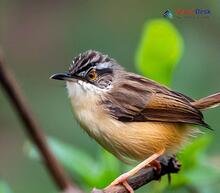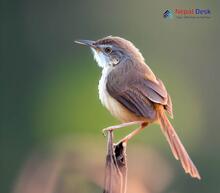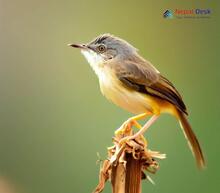Nepal, home to an extraordinary array of flora and fauna, has long been a destination for birdwatchers and wildlife enthusiasts alike. Among its most intriguing avian inhabitants is the Cisticolinae bird subfamily, a diverse group of small, insectivorous songbirds that are not only remarkable for their captivating songs but also for their impressive adaptability to various habitats. Here, we will take a closer look at these fascinating birds and what makes them stand out in the rich biodiversity of Nepal.
The Cisticolinae Subfamily: A Brief Overview
The Cisticolinae subfamily belongs to the larger Sylviidae family, with more than 100 species spread across Africa, Asia, and Australia. These mostly small-sized birds possess stout bodies and short wings, enabling them to navigate through dense vegetation with ease. Their plumage is predominantly brown or buff, with subtle variations in pattern and coloration providing effective camouflage in their habitats.
What sets the Cisticolinae apart from other birds, however, is their complex songs. Each species boasts an extensive repertoire of calls and tunes, which can be heard during territorial displays or courtship rituals. Males are known for their elaborate airborne performances as well – they often hover high above the ground emitting high-pitched whistles and trills to capture the attention of potential mates.
Cisticolinae Birds in Nepal: Key Species
Nepal itself hosts a number of Cisticolinae species that demonstrate remarkable adaptability to various habitats ranging from grasslands to shrublands and forests. Some of the most fascinating examples include:
Bristled Grassbird (Schoenicola striatus)
This elusive species inhabits tall grasslands near wetlands or riverside locations. They are known for their secretive behavior and are typically detected by their distinctive, plaintive calls.
Common Tailorbird (Orthotomus sutorius)
Widespread in a variety of habitats including gardens, woodlands, and forests, the Common Tailorbird amazes human observers with its nest-building prowess. The bird sews leaves together using plant fibers or spider silk to create a unique and secure home for its eggs.
Grey-breasted Prinia (Prinia hodgsonii)
Inhabiting subtropical or tropical moist shrublands in hilly regions, this small but vocal species is identified by its pale greyish-brown plumage and distinctive black mask. Their complex songs consist of repeated series of rich, melodic notes.
Conservation Efforts: Protecting the Cisticolinae Subfamily
As with many bird species in Nepal and elsewhere, Cisticolinae birds face challenges due to habitat degradation caused by human activities such as agricultural expansion and urbanization. Therefore, it is essential that conservation efforts not only focus on preserving the natural environments these birds rely upon but also involve increasing public awareness regarding their ecological importance.
In conclusion, Nepal's Cisticolinae bird subfamily offers a fascinating glimpse into the diverse world of avian life. These small yet enchanting creatures play a crucial role in maintaining ecological balance within their habitats and contribute to the rich tapestry of the region's biodiversity. By increasing our understanding and appreciation of these remarkable birds, we can help ensure their survival for generations to come.







